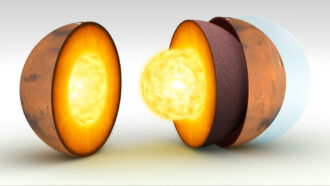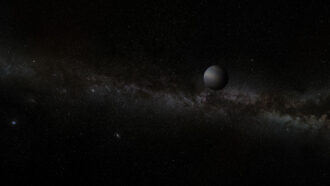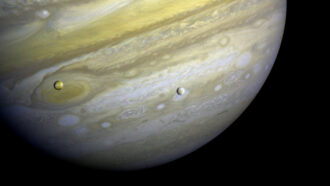Why you shouldn’t use magnets when looking for meteorites
A popular tool for identifying meteorites can destroy scientific information

Magnets, which are popular tools for identifying meteorites, can overwrite information that the space rocks contain about their parent bodies’ magnetic fields. That’s what happened to the oldest known Martian meteorite (shown), researchers say.
NASA







